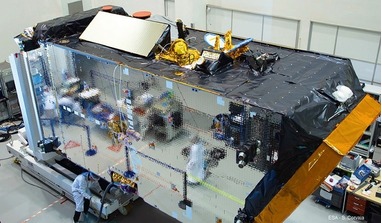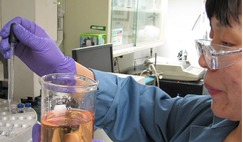 Issue #1(3) 2015
Issue #1(3) 2015
The ARTES programme is ESA’s way of ensuring a thriving satcoms sector. Here is how it works in practice: from PPPs to financing innovation
 Issue #2(4) 2015
Issue #2(4) 2015
A short-take-off airplane that can lift heavy cargos with ease. It sounds like a dream come true for airlines, yet the price of making such a vehicle is that it looks ‘a bit funny’.
 Issue #3(5) 2015
Issue #3(5) 2015
Humanity’s cosmic expansion is bound to run up against barriers, which could include the rise of a post-human species. This, however, is nowhere near as problematic as the possibility that the Universe is a fractal, and all life within it is doomed.
 Issue #3(5) 2015
Issue #3(5) 2015
In the past, the space industry has been anything but green in its approach to environmental issues. But technologies and perceptions are changing fast in a host of areas. Engines can be designed to use less fuel, rockets developed to reach orbit without dropping stages back to Earth, and launch sites made more compact. All of which will not only help preserve the natural environment, but also reduce costs
 Issue #1(7) 2016
Issue #1(7) 2016
A new window on the cosmos opened at the start of the year when scientists announced for the first time they had observed gravitational waves.
With suggestions for human flights to Mars by the 2030s grabbing media headlines, it is easy to overlook another major proposal for humankind’s next great leap.
ROOM is an open forum for comment and opinion - and actively encourages contributions...
The Plasma Crystal project is the most prolific physics research programme conducted in Earth orbit - what is it, what has it achieved and what can the results be used for?
The Middle East has been the backdrop for changes in the character of war and, with the rapid dissemination of high-resolution Earth observation satellites throughout the region, more changes are in store
In the first of two ‘Special Report’ articles for ROOM on future Mars exploration, Stephen Ashworth of Oxford University’s Voltaire Foundation examines the Musk - Mars phenomenon and asks what is behind the entrepreneur’s expansive vision to colonise the red planet.